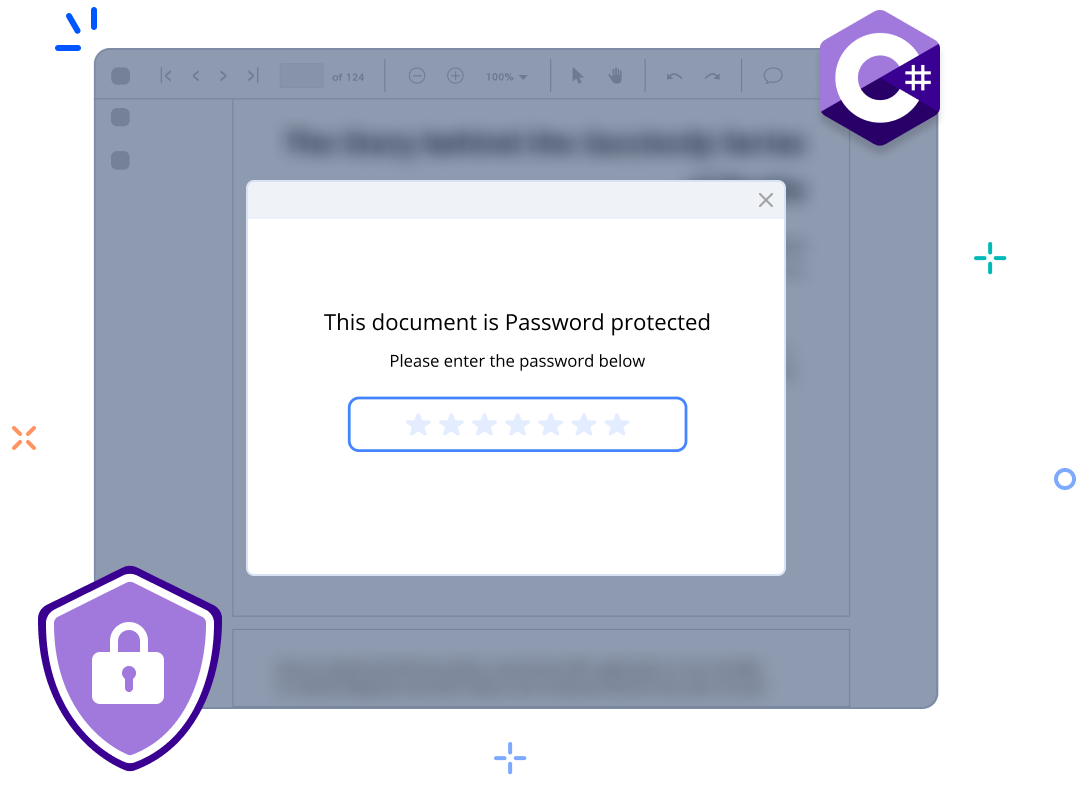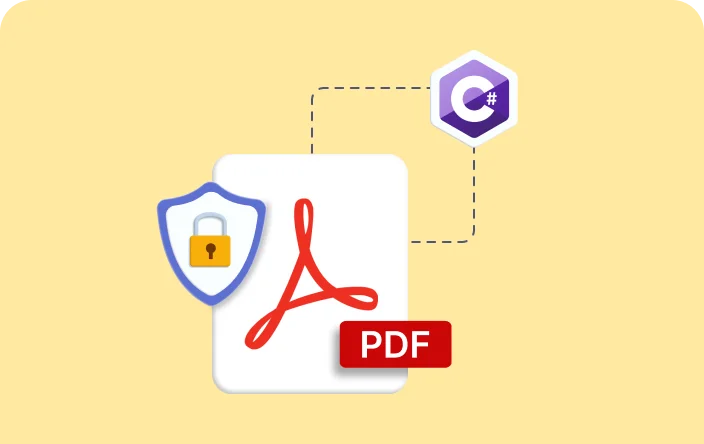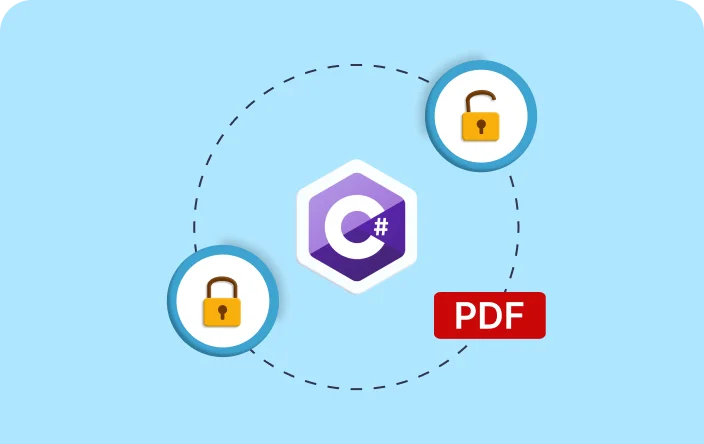Trusted by the world’s leading companies

Overview
The Syncfusion .NET PDF Library offers various encryption standards to protect PDF documents from unauthorized access. Users can effortlessly integrate this library into their applications to secure PDFs with different levels of encryption. The library complies with the enhanced security features of PDF 2.0, providing AES-GCM and AES (Advanced Encryption Standard) 256 Revision 6 with Unicode password support.
This security works seamlessly across platforms, including Windows, macOS, Linux, Android, and iOS, through any .NET-based application, such as ASP.NET Core, ASP.NET MVC, Blazor, .NET MAUI, Xamarin, WinForms, WPF, and WinUI.
How to protect PDF documents in C#?
The following code demonstrates how to protect a PDF document using C#.
Key features of PDF protection
Explore key functionalities, including encryption algorithms, user and permission passwords, customizable document permissions, and more to protect your PDF files.
Encryption algorithms
The Syncfusion PDF Library provides support for basic and advanced encryption standards. The following are the encryption standards supported:
- RC4 40-bit
- RC4 128-bit
- AES 128-bit
- AES 256-bit Revision 5
- AES 256-bit Revision 6 (PDF 2.0)
- AES-GCM 256-bit (PDF 2.0)
Protect with permission password
A permission or master password is used to set access rights for document restrictions. Only users with the master password can edit the encrypted document.
Protect with user password
A user password, also known as a document open password, is required for users to open and view the document.
Document permissions
By customizing the document permission settings, you can control whether users are allowed to perform specific actions such as copying content, printing, editing the document, filling form fields, and more. Additionally, you can change or remove PDF permissions and passwords.
Encryption Options
The Syncfusion PDF Library lets users encrypt a PDF document as follows:
- Encrypt all contents: All contents of the document will be encrypted.
- Encrypt all contents except metadata: All contents of the document will be encrypted except metadata.
- Encrypt only attachments: Encrypts only the file attachments, rest of the document will be left unencrypted.
Removing Password Security from a PDF File
This process involves disabling the password protection on a PDF file, making it accessible without the need to enter a password. This can be useful for simplifying access when the document no longer requires security restrictions. Once the password security is removed, users will be able to open, view, and perform actions on the PDF without any restrictions.
Explore resources for PDF protection
Discover valuable resources from our blog and knowledge base to encrypt PDF documents.
Explore these resources for comprehensive guides, knowledge base articles, insightful blogs, and ebooks.
Product Updates
Technical Support
Frequently Asked Questions
What is PDF encryption, and why is it important?
PDF encryption is the process of securing a PDF document by encoding its contents to prevent unauthorized access. It’s important because it ensures that sensitive information remains confidential and protected from unauthorized viewing or tampering.
Can I remove encryption from a PDF document?
Yes, you can remove the encryption from existing PDF documents using Syncfusion .NET PDF Library.
Can I restrict editing in PDFs?
Yes, you can control whether the users are allowed to perform specific actions, such as copying content, printing, editing the document, and filling form fields.
How do I choose a strong password for encrypting a PDF?
When choosing a password for encrypting a PDF, it’s important to use a combination of uppercase and lowercase letters, numbers, and special characters. Avoid using easily guessable passwords like common words or phrases.
How does PDF protection work?
PDF protection typically works by encrypting the contents of a PDF file, making it accessible only to users who have the correct password or decryption key. This encryption process involves encoding the document’s data using algorithms to prevent unauthorized access.
Our Customers Love Us


Want to create, view, and edit PDF files in C# or VB.NET?
No credit card required.
Awards
Greatness—it’s one thing to say you have it, but it means more when others recognize it. Syncfusion® is proud to hold the following industry awards.






















